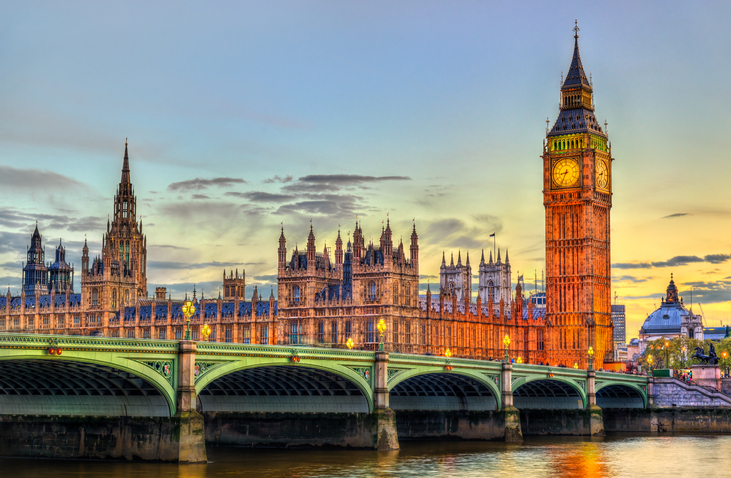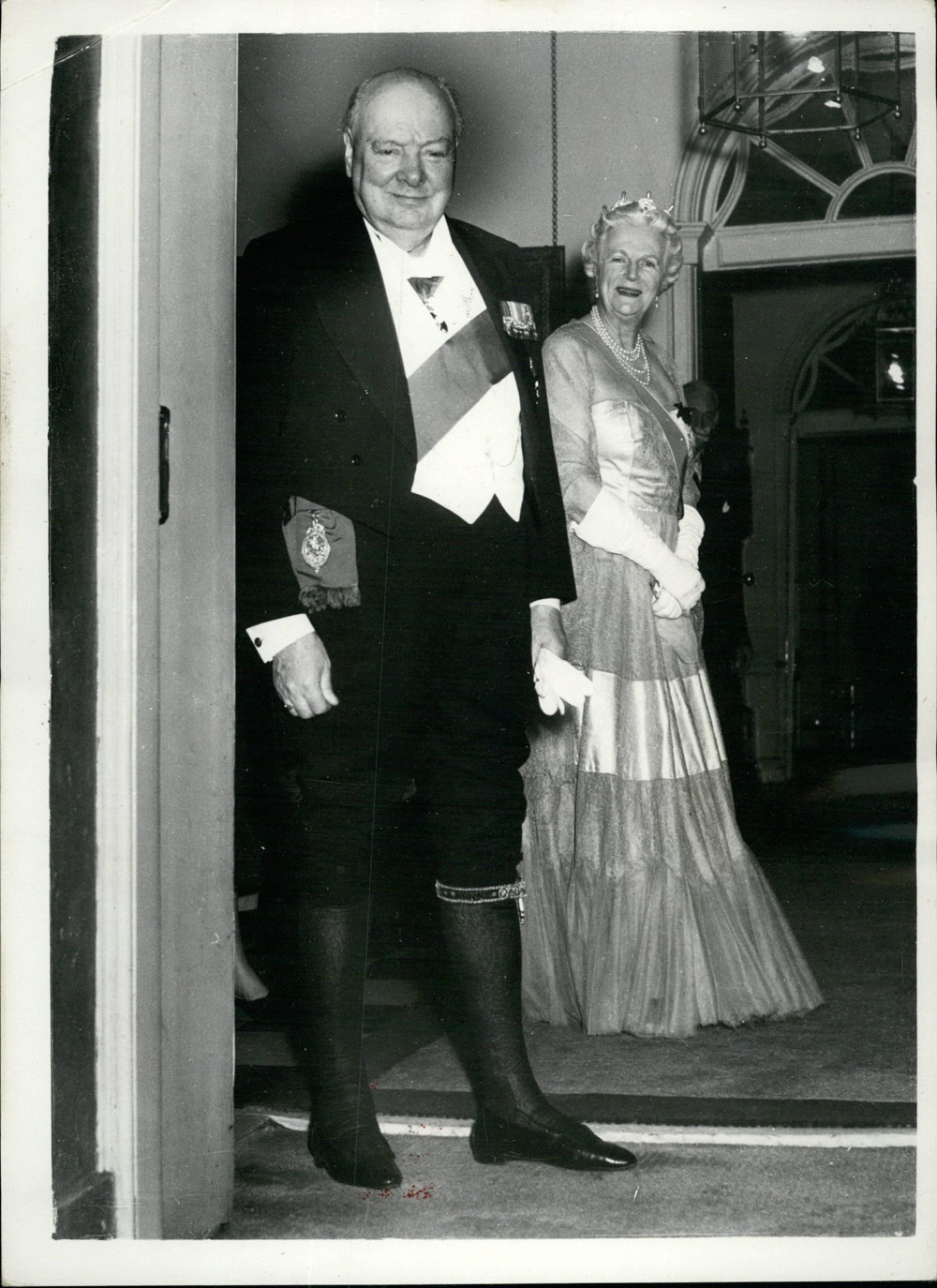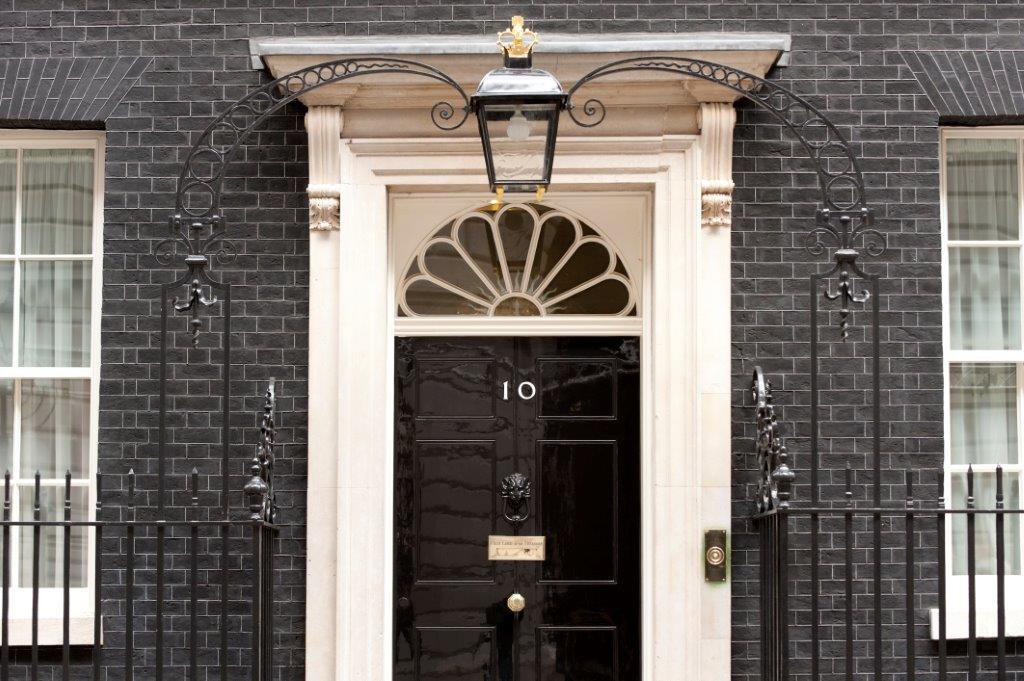Prime ministers and honours during the reign of Elizabeth II
To mark the Queen’s Platinum Jubilee celebrations, we look through The Gazette archives at the history of prime ministers and British honours during the reign of Elizabeth II.

Prime ministers and honours from Elizabeth II
Since she was proclaimed sovereign throughout her realms on 6 February 1952 (Gazette issue 39458), Elizabeth II has seen 14 different prime ministers of the United Kingdom, starting with Winston Churchill who was the incumbent Prime Minister when she became Queen.
Though as Head of State she has always remained strictly neutral on all political matters, the Queen has bestowed numerous honours upon prime ministers from the various British orders of chivalry during her reign, all of which have been recorded in issues of The Gazette.
Order of the Garter
One of the most frequently used orders to bestow knighthoods on former prime ministers is the Most Noble Order of the Garter. Founded by Edward III of England in 1348, the Order of the Garter is the most senior order of knighthood in the British honours system, ranking only behind the Victoria Cross and the George Cross in order of precedence.
Knights and Ladies of the Garter are chosen personally by the Sovereign to honour those who have held public office and have contributed in a particular way to national life. Membership of the Order of the Garter is limited to just 24 persons at one time.
Before Gordon Brown, the Queen made all but two of her prime ministers Knights or
Ladies of the Garter. Harold Macmillan declined the offer, while Sir Alec Douglas-Home was already a knight of the Order of the Thistle (Gazette issue 42815) before entering Downing Street in 1963. The first to accept the Order of the Garter
was Winston Churchill on 28 April 1953, shortly after the Queen ascended the throne, while the latest to
accept was Tony Blair on 1 January 2022.
See the prime ministers who accepted the Order of the Garter below:
- Sir Winston Churchill (Gazette issue 39838)
- Sir Anthony Eden (Gazette issue 40310)
- Clement Attlee (Gazette issue 40751)
- Sir Harold Wilson (Gazette issue 46885)
- James Callaghan (Gazette issue 50903)
- Sir Edward Heath (Gazette issue 52903)
- Margaret Thatcher (Gazette issue 54017)
- Sir John Major (Gazette issue 57622)
- Sir Tony Blair (Gazette issue 63581)
Other honours
The Order of Merit is often referred to as the ‘most exclusive club in the world.’ Limited to only 24 living members at any one time, many of Britain’s most celebrated politicians have been admitted into the Order during the Queen’s reign, including Margaret Thatcher (Gazette issue 52360) and Harold Macmillan (Gazette issue 46872). Winston Churchill (Gazette issue 37407) and Clement Atlee (Gazette issue 39379) also received the Order of Merit but these were before the Queen ascended the throne.
The Order of the Companions of Honour is another order which is limited to a certain number of persons at any one time, with just 65 person making up the order. Three British prime ministers have worn the CH badge, however only John Major was honoured during the Queen’s reign. This happened in the 1999 New Year Honours (Gazette issue 55354) when he was recognised for “Services to Peace in Northern Ireland”.
Prime Minister's Resignation Honours
The Prime Minister's Resignation Honours are honours granted at the behest of an outgoing UK Prime Minister following his/her resignation. In such a list, a Prime Minister may request the reigning monarch to grant peerages, knighthoods, damehoods and other awards in the British honours system to any number of people.
See all the Prime Minister’s Resignation Honours lists during Elizabeth II’s reign below:
- 1963 Harold Macmillan (Gazette issue 43136)
- 1964 Alec Douglas-Home (Gazette issue 43502)
- 1970 Harold Wilson (Gazette issue 45165)
- 1976 Harold Wilson (Gazette issue 46916)
- 1990 Margaret Thatcher (Gazette issue 52371)
- 1997 John Major (Gazette issue 54850 and Gazette issue 54851)
- 2016 David Cameron (Gazette issue 61678)
- 2019 Theresa May (Gazette issue 62807)
- 2022 Boris Johnson (Gazette issue 64120)
Dissolution Honours
The Dissolution Honours are a list of people nominated to receive honours after the Dissolution of Parliament prior to a general election. The Parliament of the United Kingdom is dissolved 25 working days before polling day, as determined by the Fixed-term Parliaments Act 2011.
Typically, a Dissolution Honours list allows an outgoing prime minister to suggest honours for politicians, including retiring MPs. Many are made life peers and the list may include knighthoods for those who have served in Parliament. Appointments to the Privy Council of the United Kingdom are also made.
See all the Dissolution Honours lists made during Elizabeth II’s reign below:
- 1959 Harold Macmillan (Gazette issue 41818)
- 1964 Alec Douglas-Home (Gazette issue 43502)
- 1966 Harold Wilson (Gazette issue 43981)
- 1970 Harold Wilson (Gazette issue 45112)
- 1974 (February) Edward Heath (Gazette issue 46254)
- 1974 (October) Harold Wilson (Gazette issue 46422)
- 1979 James Callaghan (Gazette issue 47868)
- 1983 Margaret Thatcher (Gazette issue 49424)
- 1987 Margaret Thatcher (Gazette issue 51014)
- 1992 John Major (Gazette issue 52943)
- 1997 John Major (Gazette issue 54743)
- 2001 Tony Blair (Gazette issue 56222)
- 2005 Tony Blair (Gazette issue 57639)
- 2010 Gordon Brown (Gazette issue 59459)
- 2015 David Cameron (Gazette issue 61359)
- 2019 Boris Johnson (Gazette issue 63874)

Prime ministers and peerages
A life peer is an honour given to individuals which cannot be inherited by the recipient’s children (in contrast to a hereditary peer). In the UK, life peerages are created under the Life Peerages Act 1958 and entitle holders to sit in the House of Lords under the style and dignity of Baron (male) or Baroness (female).
While life peerages in the United Kingdom are created by the Sovereign by Letters Patent under the Great Seal, in practice they are only granted when proposed by the Prime Minister. By convention the Leader of the Opposition and other party leaders can also suggest a certain number of life peers. Traditionally peerages are awarded to individuals on retirement from important public offices, such as the Prime Minister, Speaker of the House of Commons and the Archbishop of Canterbury and York.
Sir Alec Douglas-Home actually renounced his hereditary title of the 14th Earl of Home on becoming Prime Minister (Gazette issue 43156). He would, however, later accept a different peerage upon retirement (Gazette issue 46441). Though Harold Macmillan declined a peerage on leaving office, he did accept a second offer of the customary hereditary earldom for retiring Prime Ministers, as Earl of Stockton and Viscount Macmillan of Ovenden (Gazette issue 49660). This was the last earldom to be offered outside the Royal Family.
Former prime ministers who took peerages after their retirement from office include:
- Anthony Eden, 1st Earl of Avon (Gazette issue 42411)
- Alec Douglas-Home, Baron Home of the Hirsel (Gazette issue 46441)
- Harold Wilson, Baron Wilson of Rievaulx (Gazette issue 49424)
- Harold Macmillan, 1st Earl of Stockton and Viscount Macmillan of Ovenden (Gazette issue 49660)
- James Callaghan, Baron Callaghan of Cardiff (Gazette issue 51118)
- Margaret Thatcher, Baroness Thatcher (Gazette issue 52978)
The tradition of awarding peerages to former prime ministers on retirement is not, however, always implemented. Edward Heath and John Major chose not to become a peer, while Tony Blair, Gordon Brown and David Cameron have yet to receive a peerage.
See also
This month in history: The coronation of Queen Elizabeth II
The history of Prime Minister's Resignation Honours
What are the Dissolution Honours?
Images
Getty Images
Alamy
Getty Images
Publication updated
10 October 2023
Any opinion expressed in this article is that of the author and the author alone, and does not necessarily represent that of The Gazette.
